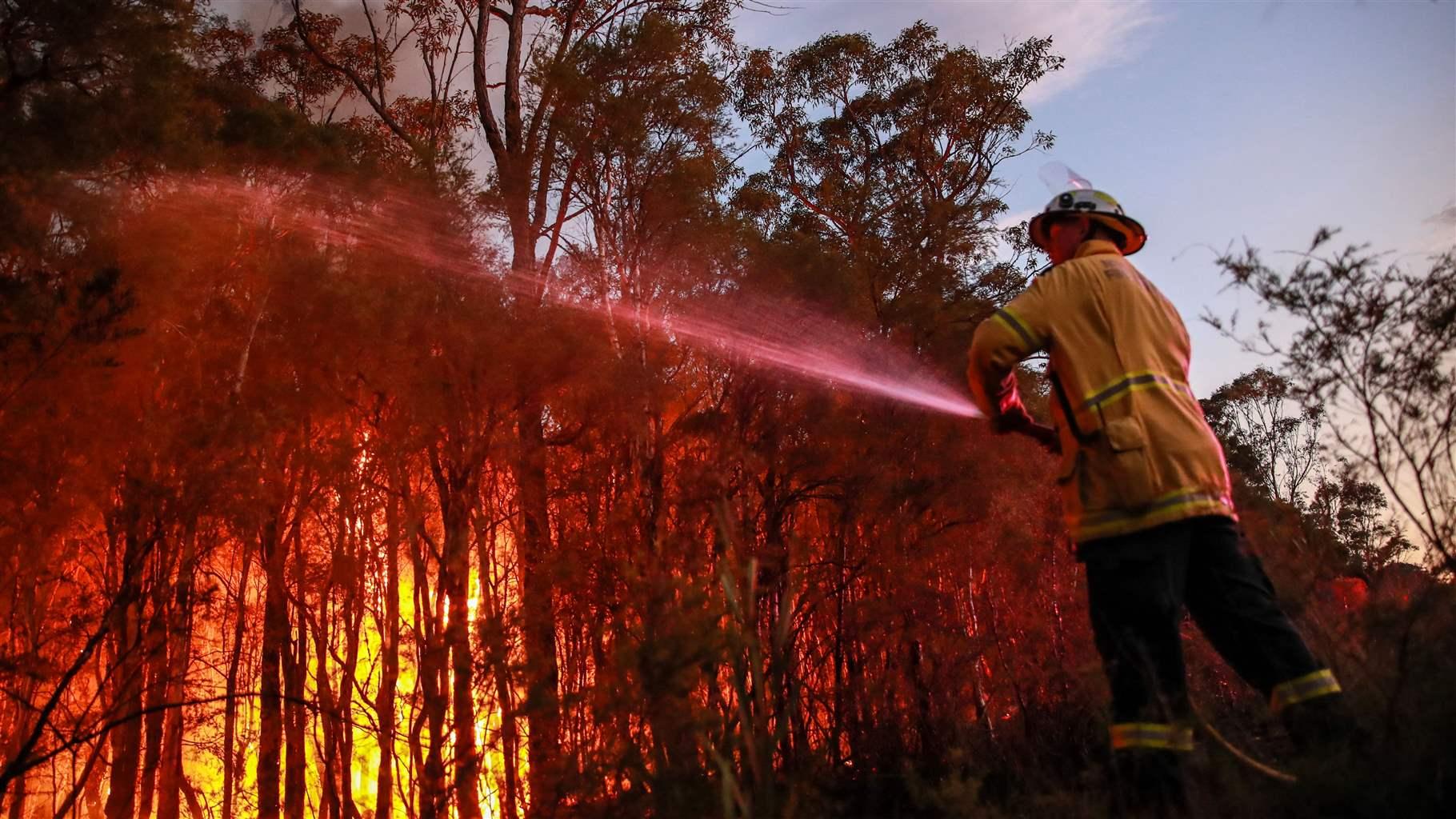Emerging Issues for Global Conservation in 2024
Wildfires, hydrogen energy, ocean carbon dioxide removal, and sea urchin declines among topics needing attention

Unlike in most other pursuits, uncertainties in conservation can have major implications for both people and nature around the world. Early recognition of potential risks to, or opportunities for, environmental conservation allows experts and policymakers to better investigate and address them.
That’s the principle behind a new study identifying a priority list of emerging issues with the potential to significantly influence conservation efforts around the world in the next five to 10 years. The study—by a global panel of experts, on which I served—aims to spur further research and policy discussions that can blunt rising conservation threats and maximize the benefits of promising strategies and technologies. The study is the 15th in an annual series coordinated by the U.K.-based Cambridge Conservation Initiative and was partially funded by The Pew Charitable Trusts.
Using a research method known as horizon scanning, our panel proposed, debated, and ranked 96 issues for 2024, scoring each based on its potential positive or negative effects on biological conservation, and its novelty. The 15 highest-scoring issues were featured in our study, published this month in the journal Trends in Ecology & Evolution.
Here are four of the emerging issues that teams at Pew are closely tracking.
Wildfires’ cascading climate effects
Evidence is mounting that wildfires may cause shifts in climate cycles, such as the El Niño-Southern Oscillation (ENSO), a phenomenon that affects temperatures and precipitation around the globe. Smoke from wildfires—as well as other types of biomass burning—curbs our planet’s absorption of solar radiation and influences cloud and precipitation patterns. For instance, high concentrations of smoke may cool sea surface temperatures and strengthen development of the ENSO cycle’s La Niña phase, which can induce drought in the southern U.S., floods in the Pacific Northwest, and a more severe Atlantic hurricane season. In turn, these and other wildfire effects could threaten ecosystem biodiversity and conservation, fisheries, agricultural production, and human health and safety.
Hydrogen energy’s drawbacks
Hydrogen energy production could help reduce the burning of fossil fuels and its many detrimental effects, but this emerging industry carries its own environmental risks that must be mitigated. Such work demands greater urgency in light of discoveries of large underground hydrogen deposits and advances in technologies to extract the element from seawater. Use of white hydrogen—the term for hydrogen found naturally in Earth’s crust—would likely require extensive drilling and transportation infrastructure that disturbs ecosystems, potentially including some of the world’s most pristine land areas. Meanwhile, generating green hydrogen from ocean water could leave areas of the sea with high concentrations of salt and oxygen that likely would harm marine habitats. Regardless of where hydrogen is extracted, transportation infrastructure such as pipelines would need to be built with precision to avoid leaks. That’s because hydrogen, due to the way it reacts with other molecules in the atmosphere, can indirectly increase the abundance of important greenhouse gases such as methane. Minimizing negative effects from hydrogen energy exploration and production is essential to fully realizing its promise as a clean energy source.
Ocean-based strategies to capture carbon dioxide
The global ocean contains 50 times more carbon than the atmosphere and has the potential to hold even more. As such, technologies that could move atmospheric carbon dioxide (CO2) into the ocean to limit future climate change have drawn substantial interest and investment from governments, businesses, researchers, and environmental organizations. However, the potential magnitude of the benefits of these carbon removal approaches, some of which would entail altering the ocean’s chemistry, remains largely unknown, as do their costs.
That isn’t to say the methods are inherently bad, just that these approaches—such as adding iron to stimulate phytoplankton growth or alkaline minerals to increase water’s capacity for CO2 absorption—could harm marine species and ecosystems. Cultivating and sinking vast seaweed farms could significantly disrupt nutrient flows on the ocean’s surface and at depth, modifying systems upon which other ocean life relies. And any of these strategies could come into conflict with other ocean uses, including fishing. Before implementing ocean-based carbon removal approaches, the benefits and risks deserve rigorous study.
Sea urchin die-off events
Caribbean and Mediterranean sea urchin populations were devastated in 2022, with each seeing the rapid demise of more than 90% of certain species. These mass mortality events suggest the emergence of a novel threat to tropical ecosystems as a whole. For example, similar sea urchin die-offs in the 1980s contributed to increased algal growth that overwhelmed coral reefs. The 2022 event in the Caribbean was associated with a scuticociliate, a type of parasitic pathogen. Corals, crabs, and fishes are among the other species susceptible to similar pathogens. If the sea urchin die-offs of 2022 are linked to environmental stresses, it is possible that future outbreaks of marine disease could become more frequent.
As with any horizon scan, some of the concerns identified may not fully materialize. But by bringing attention now to such relatively unknown issues, global experts hope to improve the odds that scientists, policymakers, and other conservation supporters can find solutions, avoid unintended consequences, and seize opportunities to protect the natural world, and all the life—including humankind—that depends on it.
Jim Palardy leads The Pew Charitable Trusts’ conservation science work.












